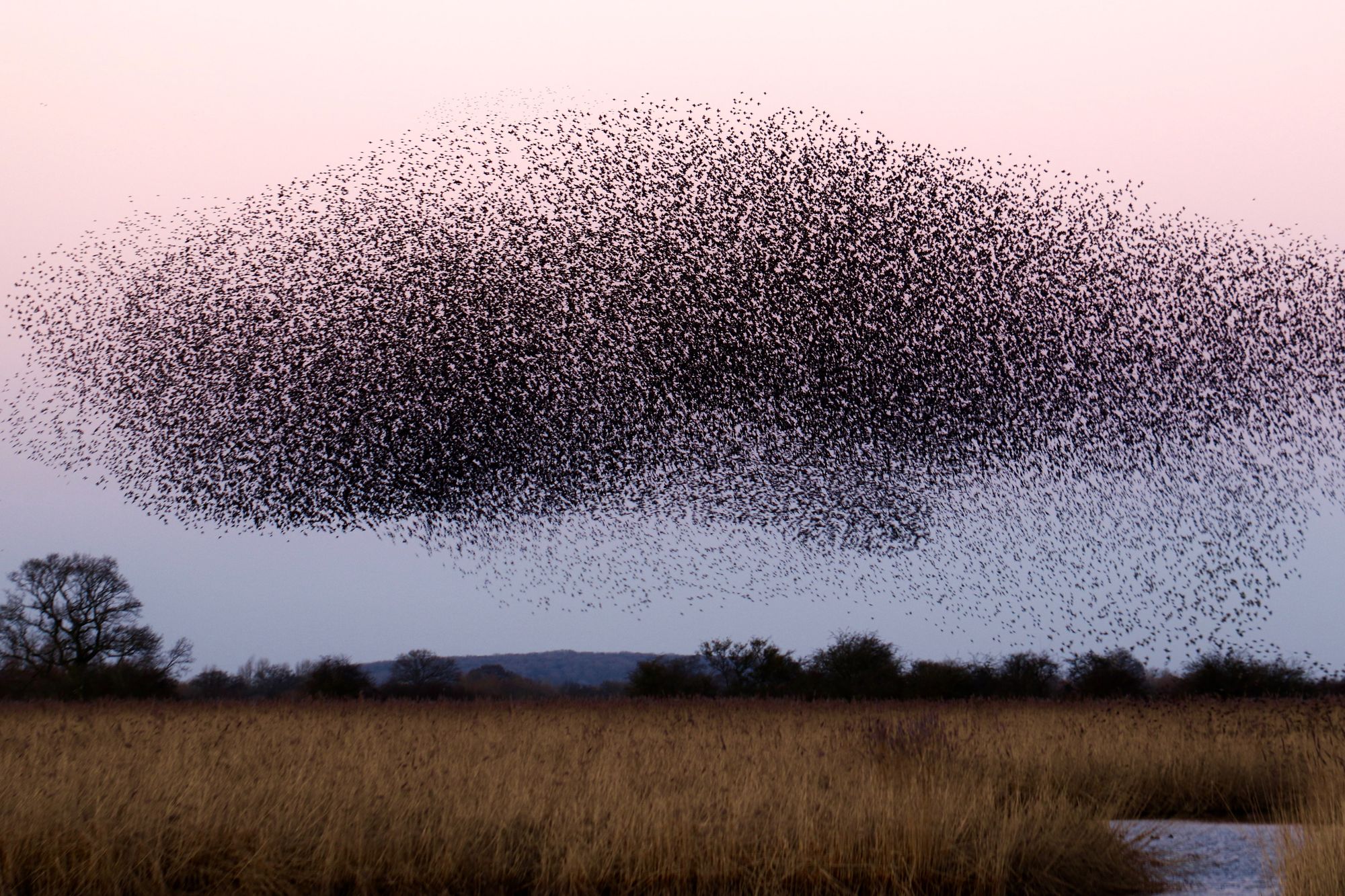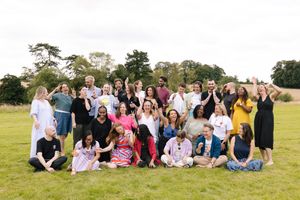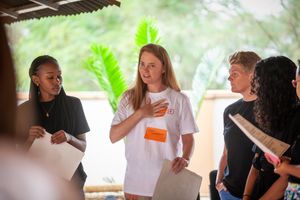
In 1907, at a county fair in rural England, Francis Galton found among the various exhibits and amusements an intriguing contest; to guess the weight of an ox. As Galton witnessed the individual guesses of almost 800 county fairgoers, he calculated that the median of their guesses came astonishingly close to the actual weight - within at least 0.8% of the accurate figure. Galton reflected that “the middlemost estimate expresses the vox populi (the belief of the majority), every other estimate being condemned as too low or too high.” What started out as a simple game ultimately led to a remarkable revelation about the wisdom of crowds.
Collective Intelligence is the concept that groups of people are smarter than individuals when it comes to approaching challenges of cognition, coordination, and cooperation. The underlying theory is that intelligence doesn’t only arise inside of an individual brain, but it can also arise in groups of individuals when they collaborate or compete. More than that, the concept of collective intelligence is that groups can, under the right circumstances, reach more accurate conclusions, make better decisions, and arrive at more precise predictions than even individual experts, and in some instances, crowds are able to arrive at innovative solutions in less resource intensive ways than more conventional methods.
Since Galton in the early 20th Century, theories of collective intelligence have been demonstrated and advanced in multiple ways: The concept of swarm intelligence used the behaviour of social insect colonies to deliver insights into decentralised decision-making, with the complex collective behaviours observed in ants for example now used to develop algorithms that enable groups of robots to work together; the internet has enabled crowdsourced knowledge creation, with sites like Wikipedia allowing people from across the globe to contribute and refine intelligence collectively; citizen science leverages the wisdom of crowds by allowing individuals to contribute to scientific research and problem-solving through platforms like Kenya-based Ushahidi; and, through rapidly improving technologies like ChatGPT from OpenAi, artificial intelligence is enabling researchers and others to draw on vast amounts of data (ChatGPT-4 is estimated to consist of 100 trillion parameters) and instantaneously synthesise and summarise knowledge in unprecedented ways.
Shaping and testing some principles for collective intelligence at Brink
Across health, climate, education, and more, Brink’s goal is to find non-obvious solutions to non-trivial problems and make positive dents in the world. For example, right now we’re trying to understand which EdTech interventions might best contribute to learning for marginalised learners in Bangladesh, how to get life-saving oxygen into poor and rural populations in Tanzania, and how Virtual Reality might support survivors of conflict-related sexual violence and contribute to more effective court cases.
In pursuit of those goals, we often find ourselves designing intelligence-gathering moments and facilitating spaces in which impactful and actionable learning can take place. Coupled with our Collectives practice, which taps into the value of our human instinct for working together and proactively makes that possible, we’ve codified some principles for Collective Intelligence and started to test them through our programmes. Here are 5 principles that we’re using to help shape the growing use of collective intelligence in our work.
Lean into the gains of convening diverse groups
Across our work, we value diversity in various forms; from the multidisciplinarity of our own team to the balance of characteristics and backgrounds across the groups that we convene. We work hard to avoid intellectual homogeneity or groupthink, and see efforts to diversify the humans we collaborate with as both necessary and wise. As a global organisation approaching global challenges, we intentionally build equity of access and contribution, and parity of voice, into our collective intelligence approaches, not simply because it’s the right thing to do, but also because it is, from an intelligence-gathering perspective, the smart thing to do.
In an earlier episode of Collective Conversations, we learnt about how diversity can be vital for the development of the practical collective intelligence required to achieve shared goals, and, over on the Frontier Tech Hub programme, we’ve been proving the value of multidisciplinary groups by collaborating to find answers to questions like “How can we integrate satellite and ground data to improve cocoa production?” and “Can artificial intelligence be used to accurately diagnose TB and silicosis?”
Build the right conditions for collective intelligence, then think about the methods.
We are careful to design and curate spaces for groups to convene, and to build empowering and effective relationships between the individuals within that group. Our starting point is to deploy our expertise in community building and management to ensure that the behavioural and relational conditions necessary for collective intelligence are satisfied. Our approach to research includes the fundamental position that rather than only learning “from” or “about”, we always learn “with” and “for”. This is an approach that acknowledges and seeks to remedy issues of power, trust, and safety that can exclude voices from research, especially marginalised voices - who are often those closest to the challenges that we approach.
For example, our role in the “Creating Hope in Conflict: A Humanitarian Grand Challenge” project, which identifies and scales innovations to help people affected by humanitarian crises caused by conflict, included the development of a community that allowed those working in unpredictable and extreme environments to come together, make meaningful connections, identify new opportunities, and form sector-changing collaborations.
Practice collective intelligence on a spectrum in terms of scale.
On one programme, we might aggregate the intelligence of six perfectly positioned people, and on another, we might be looking to make sense of a much larger dataset, speaking perhaps to the behaviours of a region or entire country. We are in this way scale agnostic; we go bigger or smaller, depending on what’s required. The size of our crowd varies.
For example, on the Vaccine Data CoLab project, we held learning workshops with multiple individuals from across 24 organisations speaking to national datasets in two countries in order to build intelligence and a shared vision for the health data ecosystem for better vaccination programmes. Whereas when it came to helping LEGO Foundation with their mission to see more LEGO products being created and informed by the science of Learning through Play, we worked with just a handful of expert product designers and turned evidence into inspiration.
Approach the potential of human-technology interfaces with cautious optimism.
We’re recognising the growing potential for computing power, machine learning, and artificial intelligence to be part of the collective intelligence mix. Large Language Models (LLMs), Natural Language Processing (NLP), and more, are playing an increasing role in how people are understanding complex topics, collecting and harnessing vast amounts of intelligence, and using computational power to synthesise and augment knowledge from an enormous variety of source material.
These new intersections of ‘human’ and ‘machine’ are now rapidly shifting the ways in which we can both create and access intelligence, and whilst we recognise issues of accessibility, tech ethics, and more, we see also the profound opportunities for tech-enhanced collective intelligence now and in the coming years.
Focus on the positive dent you’re trying to make
We generally don’t practice collective intelligence in order to learn about something in the abstract. Rather, we operate at the applied end of collective intelligence, and, through our programmes, put the wisdom of crowds to work in real, tangible, and actual ways. We practice collective intelligence in order to make positive change possible, and are led by that change rather than by any set of theories or methods.
Whether we’re helping to save thousands of lives by collectively designing better oxygen services or supporting partners to test and grow ideas for how educational technologies can deliver better learning outcomes for all children, for us, collective intelligence approaches are the means, not the end.
Let's be smarter, together
We’re still building our collective intelligence muscles even as we flex them, and are excitedly testing different ideas across our programmes. Together with partners, freelancers, and expert speakers at events we host, we are eagerly evolving our own methods, practices, and supporting principles for collective intelligence over time. There are certainly traditions and approaches to collective intelligence not captured here. We are, not surprisingly, keen to expand our knowledge of collective intelligence by engaging with its diverse practitioners and proponents wherever we find them, so if you’re reading this with some experience or expertise on this topic, then I'd love to hear from you. You can contact me on [email protected]





